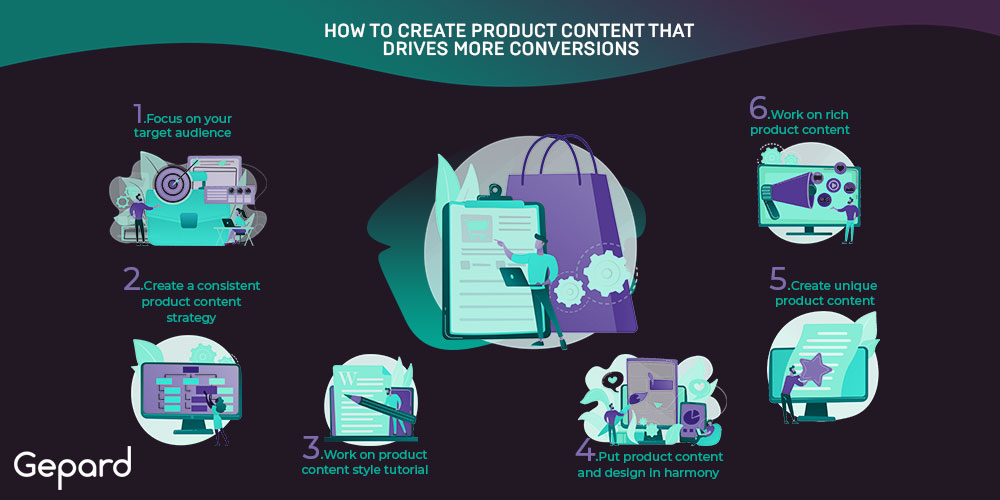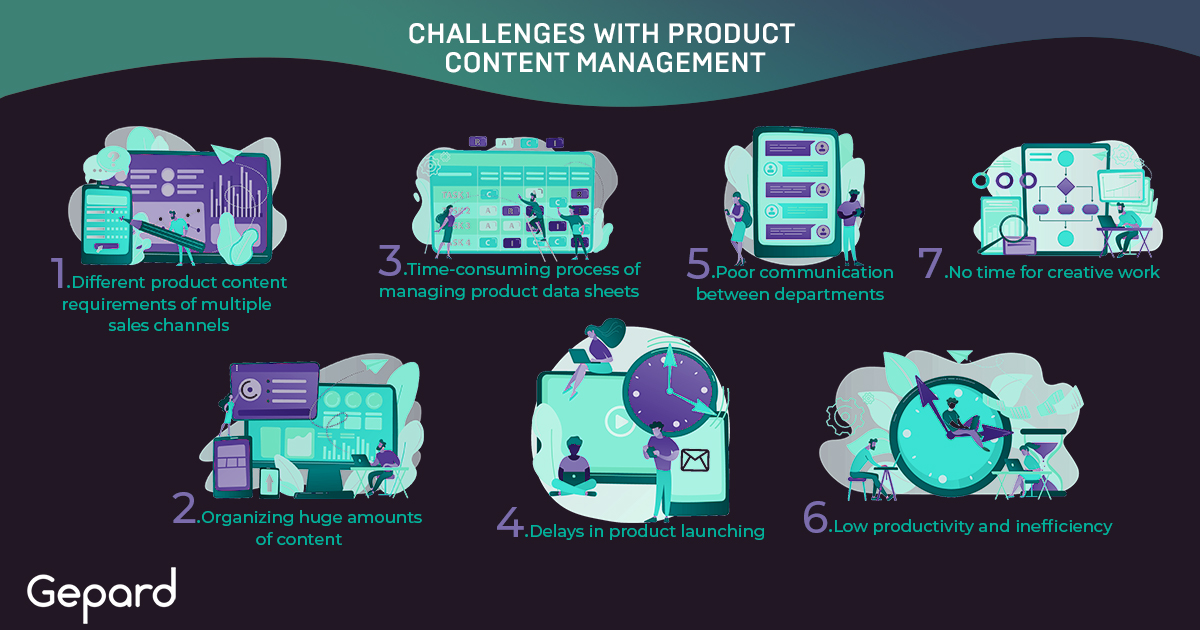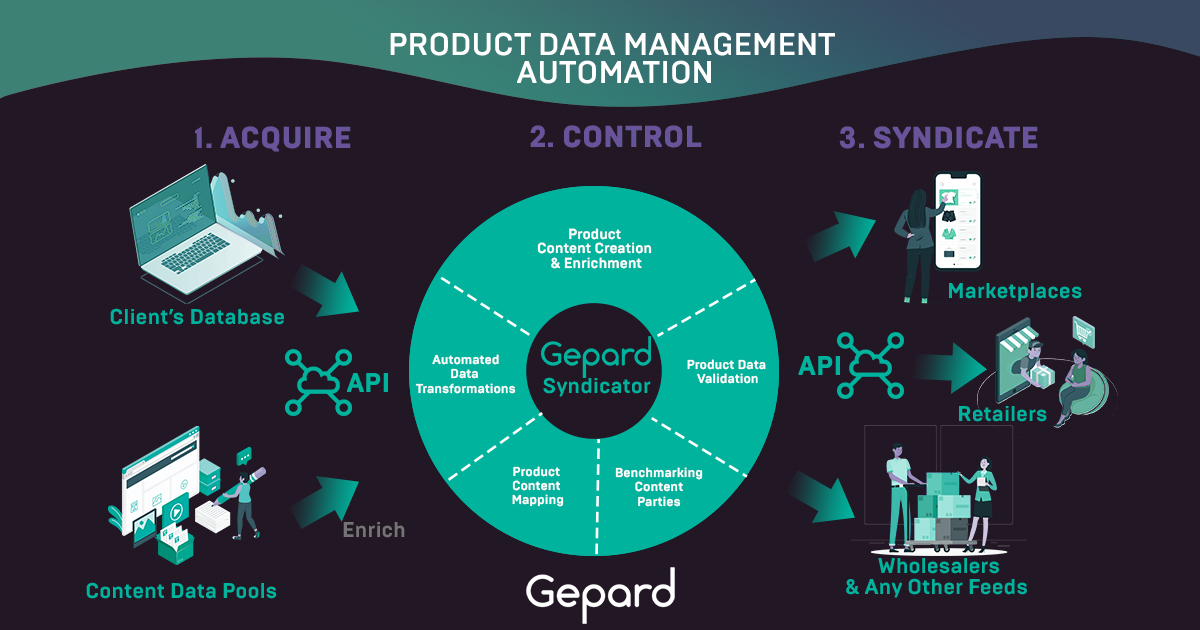6 Best Practices to Increase Product Page Conversion Rate
How much does the user need to know about the product before they add it to their online shopping cart? For some people it’s enough to have a quick glance at a product image, others might browse dozens of product reviews on different websites and still be uncertain about making their purchase.
Anyway, effective product content strategy is a crucial part of product content management that makes a customer click that “buy now” button without hesitation.
What Is Product Page Conversion Rate?
It is calculated using the following formula:

For example, if a product page receives 1,000 visitors and 50 of those visitors make a purchase, the conversion rate would be:

A higher conversion rate indicates that a product page is more effective at turning visitors into customers, which is a key indicator of its success and overall performance in an e-commerce setting.
How to Create Product Content That Drives More Product Conversion
What is the product information management strategy that drives more leads? Here is some advice on successful product content writing:
1. Usability audit
Conducting a usability audit or website usability helps identify bottlenecks in your online store that cause visitors to leave the site and worsen conversion. This includes analyzing navigation, page loading speed, usability of forms, and other interface elements.
Conduct a usability audit of your website at least once a year. Such regular analysis, integrated into the design and development process, ensures that your online resource remains user-friendly and meets the requirements of your target audience.
2. Create a consistent product content strategy
Make sure your potential customers are getting appropriate information in every phase of the buying cycle. The consistent data will help you avoid any confusion and enhance your credibility. Conducting a product content audit can help you identify content-related problems and fix them to enrich your product visibility.
3. Work on product content style tutorial
The product information management best practices involve creating a product content style guide, which helps your product content line up with your branding. It can include everything used in the product description: from grammar to the tone of your voice.
 4. Put visual product content and design in harmony
4. Put visual product content and design in harmony
Product data and design should be successfully combined to give the best possible picture of your offerings. The design should line up with the product description, and the eye-catching product images should add up to the quality, instead of distracting the potential buyer.
Taking quality product photos from different angles helps potential customers get a better idea of the product. Let’s look at some tips that will help you take better product photos:
- Provide adequate lighting to avoid shadows and dark spots.
- Choose a clean and simple background that does not distract from the product.
- Compose the product properly to highlight key features.
- Use a tripod or stabilize the camera to avoid blur, improve focus and sharpness.
- Use props to enhance the visual appeal of the product.
- Post-processing is essential to improve the overall look of your photos. You can use popular AI tools to make this job easier.
- Maintain a consistent style and aesthetic across all product photos to create a cohesive look for your online store.
Taking quality photos for your online store is crucial as it directly impacts the perception of your products and ultimately, sales.
5. Create unique product content
Hire copywriters to create original and fresh product descriptions. Use successful product content examples and study different cases. Paraphrase content when needed to ensure uniqueness. To maintain high-quality and plagiarism-free content, use a plagiarism remover to ensure originality. Duplicate content can harm your website’s Google ranking, so always prioritize fresh and authentic descriptions. Avoid duplicate content, as it makes your website’s Google ranking go down.
6. Work on rich product content
Make sure each type of your product information goes further and makes a difference:
- Texts. Use an engaging, evocative tone that motivates your users to buy. Provide customers with reliable product reviews or proofs from influencers. Use sensory words, to make your customers feel like they already own a product. Make it easy to read, and talk to a buyer like you are longtime friends. Always take the side of a reader: would you buy a product after reading this text?
- Images & videos. Invest in high-quality product images or video reviews that will give a full idea of your offerings. Present your products from a close-to-life view by shooting unique photos. Try to upgrade your product images and make them better than your competitors’ ones. Create comprehensive video guides for use, if it’s appropriate. It will help to see how the product is used in everyday life.
- Product specifications. Give as many features and specifications of the product as possible. Consider that some potential buyers already possess more knowledge than others, so the more specifications you provide, the more chances to sell the product. Focus on the results of the purchase: make customers imagine what they will gain after buying. Make the long descriptions scannable by using bullet points or subheadings.
Product Page Conversion Optimization Challenges
Successful product content management is the basis of product page conversion optimization. Here are some product information challenges you need to know about so that it does not take you by surprise.
1. Different product content requirements of multiple sales channels
To follow product information management trends and keep up with the times, businesses have to choose an omnichannel sales approach. It means the challenge of meeting numerous various demands of different eCommerce platforms. Usually, every channel has its own product data requirements and standards.
You have to adjust your product information to multiple listing approval policies, which might require changing the data types and formats. Some eCommerce platforms have more restrictive categories than others.
Without well-established product content syndication and automation, it becomes difficult to simultaneously allocate product data for different markets.
2. Organizing huge amounts of content
For a company that offers multiple products available on different platforms, organizing massive amounts of product data can be overwhelming. It becomes especially challenging when it comes to timely product content updates.
3. The time-consuming process of managing product datasheets
Creating high-quality product data sheets means dealing with the product descriptions and product specifications, such as title, material, size, dimensions, colors, prices, instructions for use, and many others. If this product page content is managed manually, it means not only boring work but also a high chance of errors that may lead to increased returns and poor customer experience. What’s more, it can harm the reputation of the company.
 4. Delays in product launching
4. Delays in product launching
Dealing with inaccurate or incomplete product information leads to spending more time on identifying and correcting errors manually. As a result, you get costly disappointing delays in product launching.
5. Poor communication between departments responsible for product content creation and distribution
If you do not establish an effective product content management system and all the routine work is done manually, you have a risk of huge gaps in communication between different business departments.
Each product content provider can make a costly mistake that will lead to a lack of collaboration and misunderstandings between departments and team members.
6. Low productivity and inefficiency
Without having product content management software in your company, you and your team members will suffer from manual repetitive, and unsatisfying work, related to product information management. It becomes difficult for teams to update others on principal tasks and deadlines, which creates confusion and lowers productivity and efficiency.
7. No time for creative work
The time-consuming manual tasks related to product info are time stealers that prevent teams from focusing on more creative work. Instead of filling in the error-prone spreadsheets, your teams could devote their time to more valuable work, directly related to making your product better.
PIM Automation — Game Changer for Product Conversion Rate Increase

Companies that want to be omnipresent and successfully cope with the above-mentioned challenges, choose to incorporate new technologies. Businesses pick product syndication management software to organize, enrich, categorize, and publish product data automatically.
To control product data and maintain product content syndication (automated product content delivery), you can work in a PIM (Product Information Management).
The software can offer product content mapping templates that will help you deliver the right product content, to the right customers, at the right time, while saving your time for more creative tasks.
Final Thoughts
The well-crafted product content writing will take you far. Meanwhile, your customers will always be close enough, with the shopping basket, ready for checkout. Book a free of charge consultation with a Gepard expert to discuss how to automate your product data delivery and improve the customer experience.





